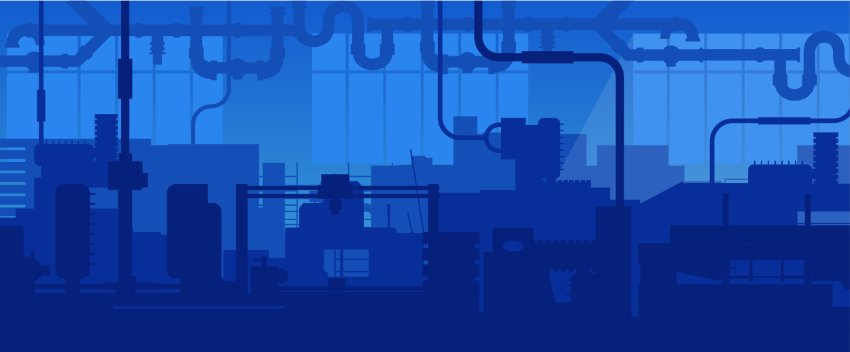Manufacturing has a branding problem. Here’s how to change it.
Adam Aguzzi, VP Manufacturing, Value Advisory at Ceridian, discusses how common misconceptions about manufacturing pose a risk to the sector’s growth, and how to rebrand the industry through a great employee experience.

The mark of a great brand is when it evokes a single universal message for its audience. Volvo = safety. Walt Disney = magic. There’s power in the strength of brand association. Many of the world’s top brands have their place firmly fixed in our culture and thrive for generations as a result.
But what happens when the image of a brand no longer matches reality?
The manufacturing sector is facing this problem right now. Arguably it’s been the most disrupted industry over the past decade, yet many people are unaware of the massive changes happening behind the scenes. As a result, the sector struggles to attract and retain top talent in an increasingly tight labor market – especially the younger tech talent it needs most.
The brand gap in manufacturing
When people think of manufacturing, they often picture gritty environments with workers dotted along conveyor belts, piecing together products by hand. But that’s a far cry from what manufacturing is today.
Today’s workers aren’t holed up in dirty factories doing mindless, repetitive tasks. They’re highly-skilled, creative problem solvers working with cutting-edge technology – both hardware and software – in a dynamic environment. It sounds like a millennial’s dream job – yet, according to a 2018 Leading2Lean survey, less than half of millennials believe manufacturing offers fulfilling careers.
Compounding the gap between reality and public opinion are the various narratives surrounding job security in manufacturing. Globalization has had a major impact on the sector over the past 20 years, and a lot of attention gets paid toward job outsourcing and competition from developing countries. And, while rapid technological advancement should help attract skilled talent, fears about job loss due to automation abound.
The truth is the sector is facing a critical labor shortage and skills gap that threatens future growth and the health of the economy. A 2018 study by Deloitte and the Manufacturing Institute (MI) found an estimated 2.4 million positions in the U.S. may be left unfilled by 2028, putting US$2.5 trillion in manufacturing GDP at risk over the next decade. Even the recent slight contraction of the sector will only provide temporary relief. Baby boomers are still retiring at historically high rates, and the skills required are shifting from what the current workforce was hired to do to what is needed to support an Industry 4.0 production line.
Rebranding manufacturing through the employee experience
So how can we improve manufacturing’s brand and become a magnet for new talent? The first step is understanding how technology has changed the nature of work and the skills economy. According to the World Economic Forum, 65% of children now entering primary school will hold jobs that currently don’t exist. And the skills that have the most value in the job market are also changing. The in-demand skills of the future are industry-agnostic: creativity, emotional intelligence, critical thinking, and communication, to name a few.
As jobs evolve to require more technology and soft skills, the whole notion of a career bound by industry is starting to dissolve. Now manufacturers aren’t only competing with each other for top talent, but with leading brands across all industries. These companies are all targeting millennial and Gen Z talent, and many have built workplace cultures that suit the needs and expectations of these younger workers.
Manufacturers can catch up and change how the industry is perceived by modernizing their employee experience (EX) and investing more in employee engagement.
How to build a modern, competitive employee experience
Manufacturers can change our image and stand out to the next wave of talent with a great EX. Some key criteria to consider:
- Ensure fairness and transparency: Only 64% of respondents to Ceridian’s 2019 Pay Experience Report agreed that they received their pay on time, and just over half were paid accurately each pay period. Getting basics like pay right goes a long way toward demonstrating fairness. And clarity and transparency around rules – such as attendance policies – and how workers’ roles fit into the overall business goals are key to making workers feel trusted. Treat the workers like adults and they’ll respect you for it.
- Leverage technology and emphasize mobile: Install a digital human capital management (HCM) platform for employees. We are heavily investing in digital initiatives – let’s not forget to digitize our workers’ day-to-day experience as well. An intuitive mobile app is a must-have.
- Make things intuitive and simple: Examine the employee journey. Is it easy to do everyday tasks like clock in, or ask for days off? Simplify administrative work for the employee, not just the managers. A key test is: can it be figured out without training?
- Allow employees to self-serve: Give workers easy access to training for their current jobs, and the jobs they want. Providing a self-serve path toward new technology skills provides a future.
- Measure employee engagement: Employee engagement can be measured using techniques similar in approach to the Net Promotor Score (NPS), which helps identify whether responders are promoters or detractors, and why. Engagement analysis tools also help identify patterns in the emotional states of employees that managers can then take action to better understand and address.
Rebranding for the future
Timeless brands stay relevant by evolving with the times, which starts with a deep understanding of their customers. This is exactly the path the manufacturing sector should take to change its employer brand – closing the gap between what employees want and how they see manufacturers falling short.
Changing the perception of our sector will be key to winning the hearts and minds of millennial and Gen Z talent and creating a positive employee experience is critical. Happy and engaged employees are the best advertising – and manufacturing can’t rebrand without them.
To learn more, check out Ceridian’s guide: Manufacturing Change: Building a next-gen workforce for Industry 4.0.
You may also like:
Ready to get started?


